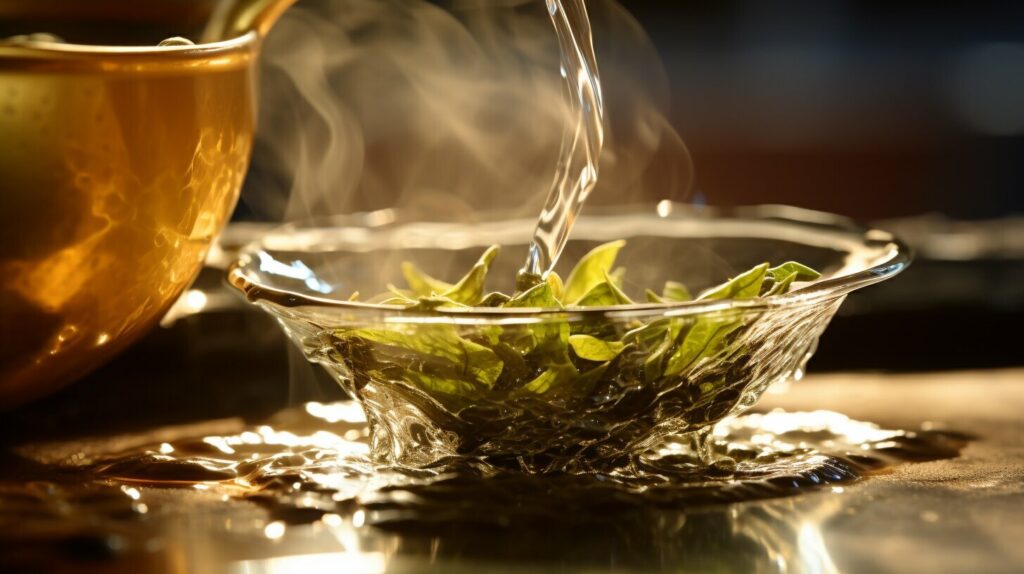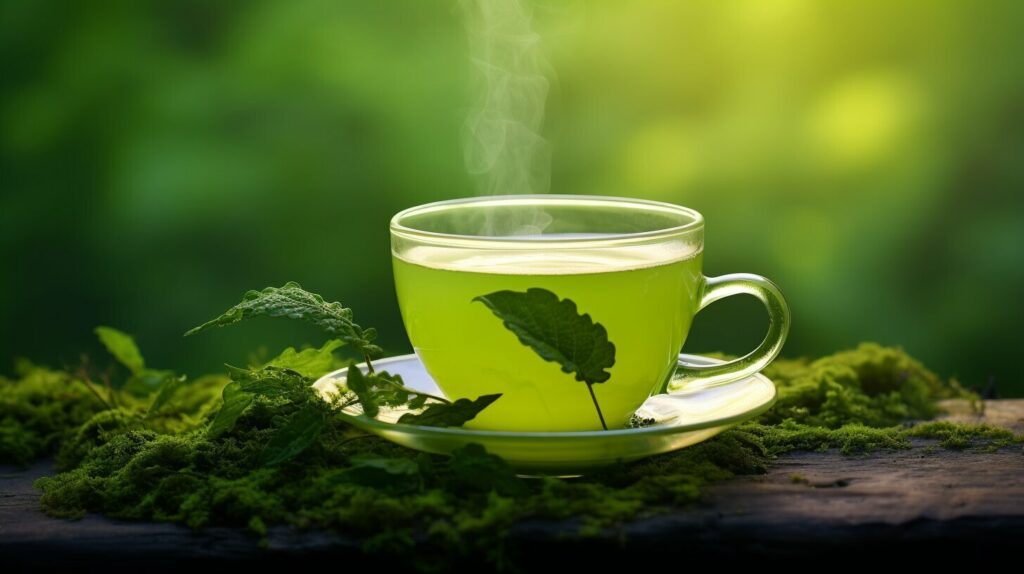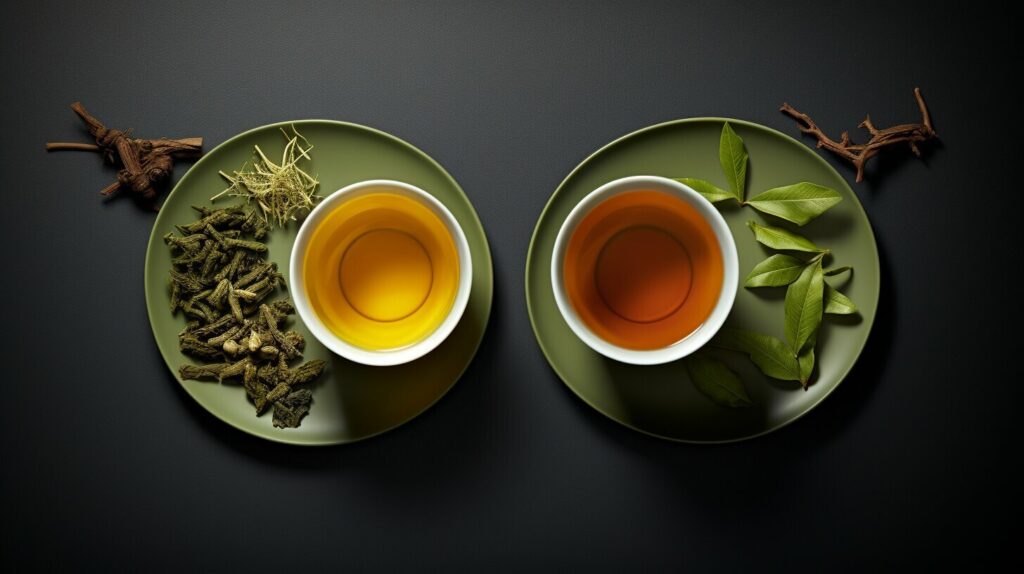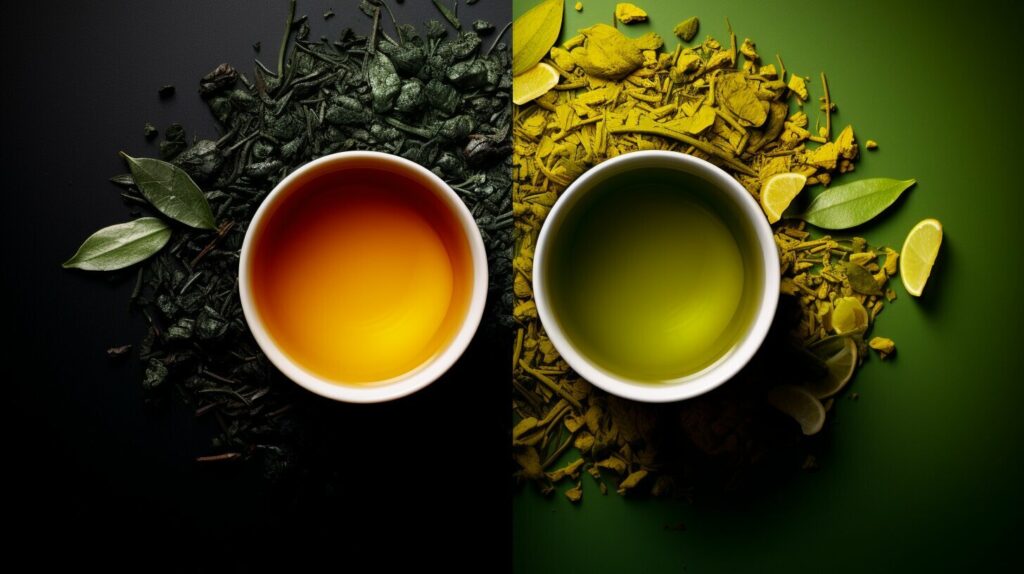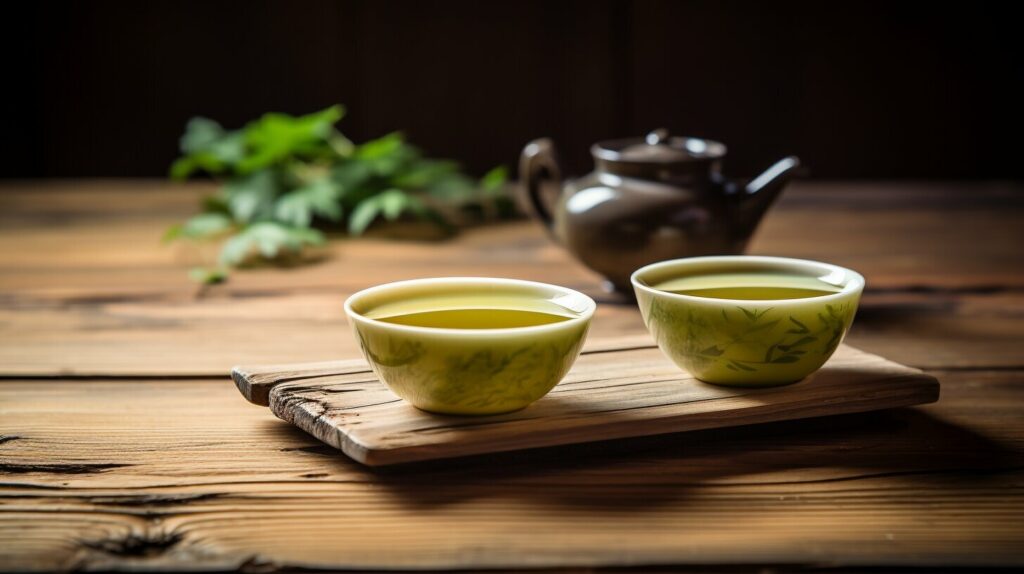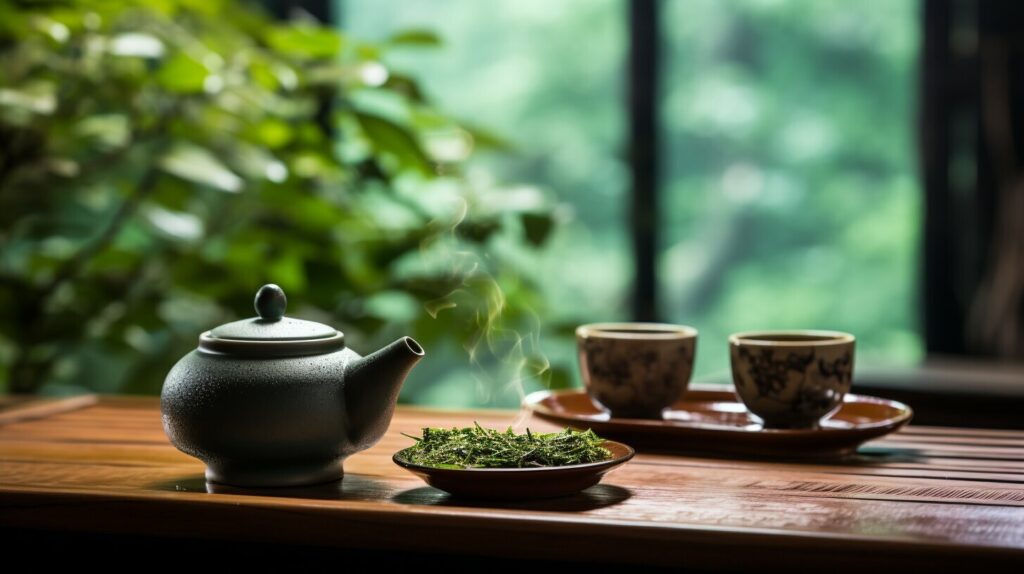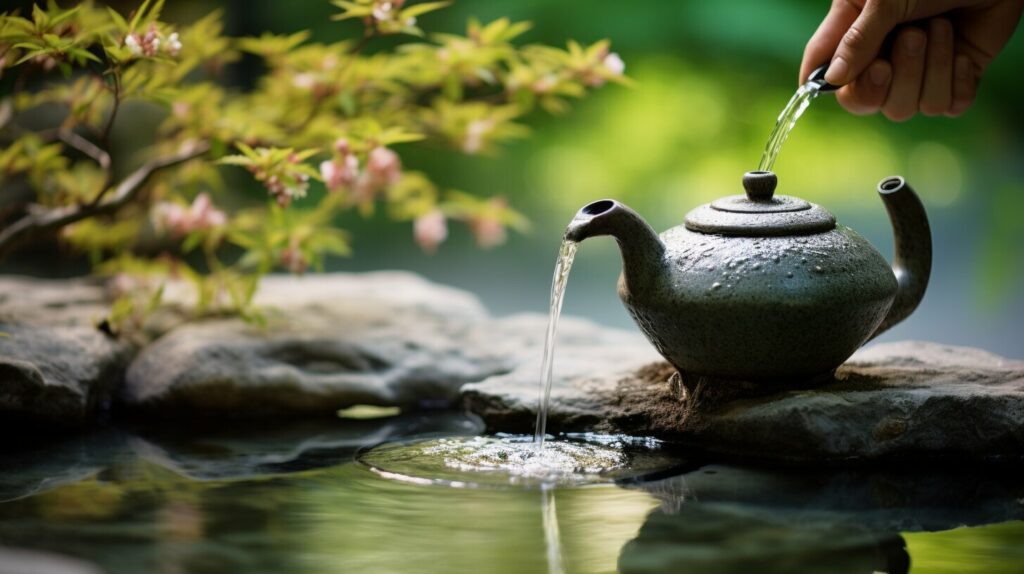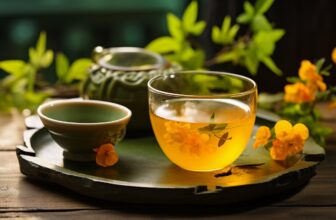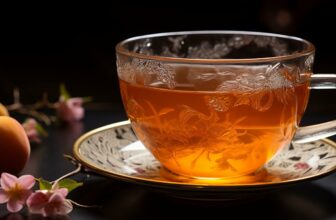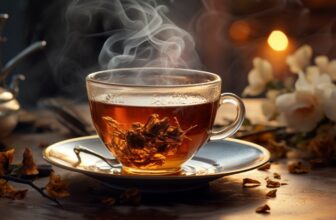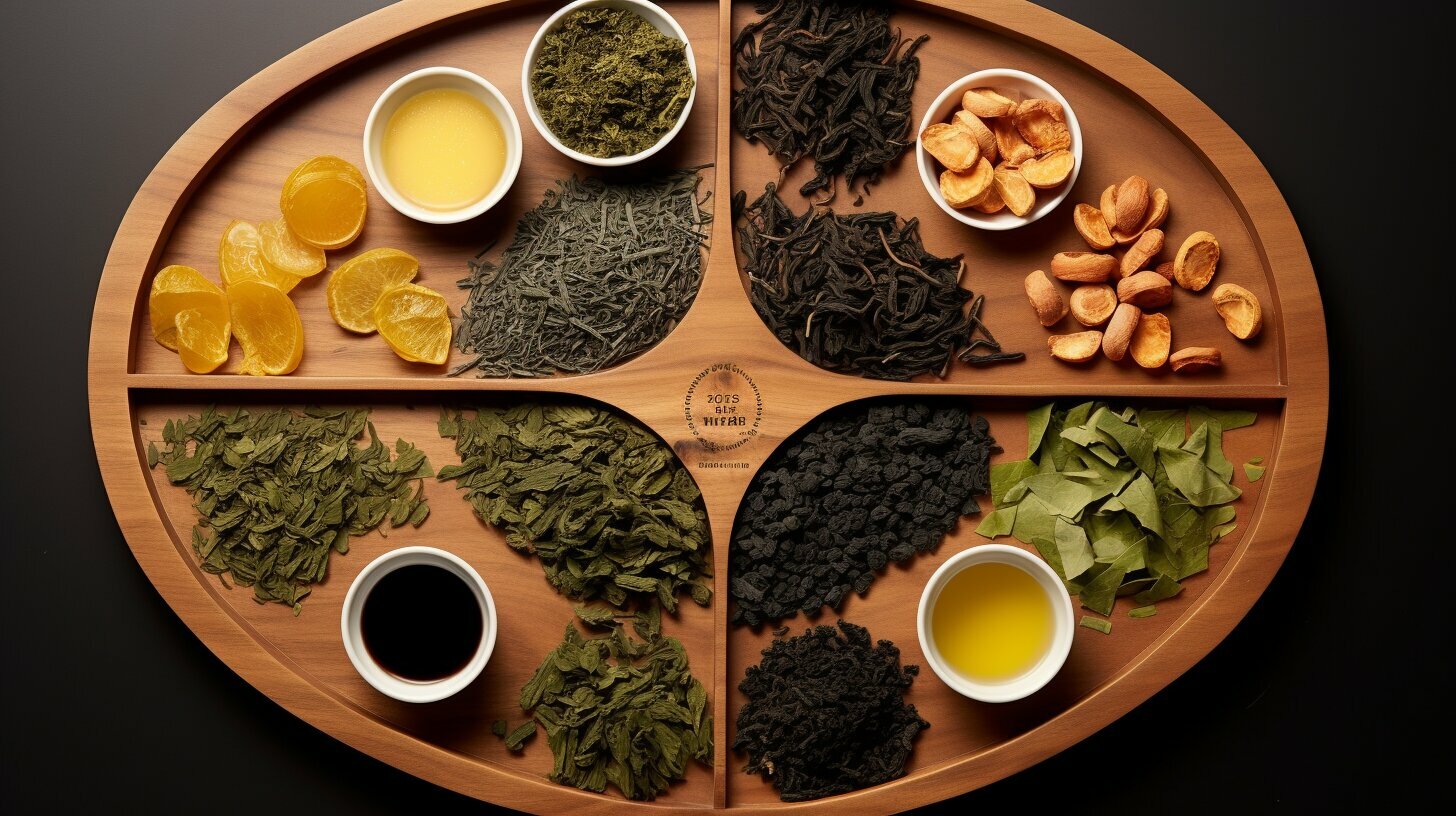
Welcome to the ultimate showdown between two beloved teas: Oolong Tea and Green Tea. In this comprehensive comparison, we will delve into the flavor profiles of oolong tea and green tea, exploring their unique taste characteristics and helping you decide which one suits your palate best. Discover the differences in flavor, aroma, and overall taste experience as we guide you through this flavorful journey.
Key Takeaways:
- Oolong tea and green tea have distinct flavor profiles that offer unique taste experiences.
- Oolong tea is known for its complex and nuanced flavors, ranging from floral and fruity to toasty and nutty.
- Green tea has a lighter and more refreshing taste, characterized by grassy and vegetal flavors.
- Both oolong tea and green tea offer health benefits, including antioxidant properties and potential weight management effects.
- The choice between oolong tea and green tea ultimately comes down to personal preference and taste preferences.
A Brief Overview of Oolong Tea
Oolong tea, also known as Wulong tea, is a renowned Chinese tea with a storied history and a diverse range of flavor profiles. It is loved for its complex and nuanced taste, which can vary from floral and fruity to toasty and nutty. The flavor characteristics of oolong tea are influenced by several factors, including the tea cultivar, growing conditions, and processing methods used.
One of the key distinguishing features of oolong tea is its partial oxidation. Unlike green tea, which is unoxidized, and black tea, which is fully oxidized, oolong tea falls somewhere in between. This partial oxidation process contributes to the unique flavor profile of oolong tea, creating a balance of flavors that is both intriguing and satisfying.
Oolong Tea Flavor Characteristics
The flavor of oolong tea can vary widely, offering a rich and diverse palate experience. Here are some common flavor characteristics found in different varieties of oolong tea:
- Floral: Some oolong teas have delicate floral notes, reminiscent of orchids or jasmine.
- Fruity: Certain oolong teas exhibit fruity flavors such as peach, apple, or citrus.
- Toasty: Roasted oolong teas can have a toasty, nutty undertone, similar to roasted almonds or caramel.
- Earthy: Some oolong teas possess earthy flavors, reminiscent of damp soil or forest floor.
These flavor characteristics make oolong tea a favorite among tea enthusiasts who appreciate a complex and evolving taste experience with each sip.
| Oolong Tea Flavor Profile | Characteristics |
|---|---|
| Floral | Delicate, reminiscent of orchids or jasmine |
| Fruity | Peach, apple, or citrus flavors |
| Toasty | Toasty, nutty undertones like roasted almonds or caramel |
| Earthy | Earthiness, akin to damp soil or forest floor |
As you can see from the flavor profile table, oolong tea offers a wide range of taste experiences, allowing tea enthusiasts to explore and appreciate the many dimensions of this beloved tea variety.
Exploring the Taste of Green Tea
Green tea is known for its distinct flavor that sets it apart from other types of tea. It offers a refreshing and revitalizing taste that appeals to many tea enthusiasts. The flavor of green tea is often described as fresh and grassy, with subtle vegetal notes and a slight astringency.
When brewed properly, green tea has a clean and light taste that is both soothing and invigorating. Its natural sweetness adds to the overall enjoyment of the tea. The taste of green tea can vary depending on the specific type and origin, but it consistently delivers a satisfying and rejuvenating experience.
Green tea’s flavor profile makes it a versatile and enjoyable beverage. It can be enjoyed on its own or paired with a variety of foods. Whether you prefer it hot or iced, green tea offers a delightful taste that is sure to please.
Quotes:
“Green tea has a unique flavor that is both refreshing and soothing. Its grassy notes and subtle sweetness make it an ideal choice for tea lovers seeking a light and invigorating beverage.” – Tea Enthusiast Magazine
Characteristics of Green Tea:
| Characteristics | Description |
|---|---|
| Flavor | Grassy, fresh, and light with subtle vegetal notes |
| Aroma | Earthy and vegetal |
| Color | Pale green to golden yellow |
| Caffeine Content | Moderate |
Green tea’s flavor and characteristics make it a popular choice among tea enthusiasts. Its unique taste and refreshing qualities provide a delightful tea-drinking experience. Whether you’re new to green tea or a longtime fan, exploring its flavor is a journey worth taking.
Comparing Oolong Tea and Green Tea Flavors
When it comes to the flavor profiles of oolong tea and green tea, there are distinct differences that set them apart. Oolong tea offers a complex and multi-layered taste experience. Its flavor profile can range from floral and fruity to toasty and nutty, providing a diverse range of sensations on the palate. On the other hand, green tea has a lighter and more refreshing taste, with prominent grassy and vegetal flavors. The flavor of green tea is often described as clean, crisp, and rejuvenating.
To further understand the flavor differences between oolong tea and green tea, let’s take a closer look at their distinct characteristics:
Taste Characteristics of Oolong Tea:
- Varied flavor profiles: floral, fruity, toasty, nutty
- Complex and nuanced taste
- Rich and full-bodied
- Pleasant lingering aftertaste
Taste Characteristics of Green Tea:
- Grassy and vegetal flavors
- Light and refreshing taste
- Clean and crisp flavor profile
- Natural sweetness
Both oolong tea and green tea have their own distinctive flavors, offering a unique taste experience. The choice between the two ultimately comes down to personal preference and the specific flavor profile that appeals to you. Whether you prefer the complexity of oolong tea or the refreshing simplicity of green tea, both teas have their own charm and can be enjoyed for their distinct flavors.
Understanding Health Benefits of Oolong Tea and Green Tea
When it comes to health benefits, both oolong tea and green tea offer a range of advantages that can support your well-being. Oolong tea is known for its potential weight management benefits, as it may help boost metabolism and promote fat oxidation. Additionally, oolong tea is rich in antioxidants that can help protect against free radicals and reduce the risk of chronic diseases. Green tea, on the other hand, is also packed with antioxidants and has been associated with various health benefits. Studies suggest that green tea may improve brain function, aid in weight loss, and reduce the risk of heart disease.
The antioxidant content of oolong tea and green tea is also worth noting. Antioxidants play a crucial role in neutralizing free radicals, which are harmful molecules that can damage cells and contribute to various health issues. Oolong tea and green tea are both known to be rich in catechins, a type of antioxidant that has been shown to have numerous health benefits. While the antioxidant content can vary depending on factors such as tea variety and brewing method, incorporating both oolong tea and green tea into your diet can provide a significant antioxidant boost.
| Health Benefits | Oolong Tea | Green Tea |
|---|---|---|
| Weight Management | May help boost metabolism and promote fat oxidation | May aid in weight loss |
| Antioxidant Content | Rich in antioxidants, particularly catechins | Rich in antioxidants, particularly catechins |
| Heart Health | Potential to reduce the risk of heart disease | May help lower cholesterol levels and reduce the risk of heart disease |
| Brain Function | No specific studies, but potential benefits due to antioxidant content | Associated with improved brain function and reduced risk of neurodegenerative diseases |
| Overall Health | May offer protection against free radicals and reduce the risk of chronic diseases | May offer protection against free radicals and reduce the risk of chronic diseases |
Ultimately, incorporating either oolong tea or green tea into your daily routine can provide a multitude of health benefits. It is worth noting that individual responses to tea consumption may vary, and it is always advisable to consult with a healthcare professional before making any significant changes to your diet. Whether you choose to enjoy the complex flavors of oolong tea or the refreshing taste of green tea, both options offer an array of health-promoting properties that can contribute to your overall well-being.
Exploring Caffeine Content in Oolong Tea and Green Tea
When it comes to caffeine content, both oolong tea and green tea offer a gentle energy boost without the jitters associated with high levels of caffeine. However, the levels of caffeine can vary depending on factors such as the specific type and brewing method.
On average, oolong tea contains less caffeine than green tea but more than white tea. This makes it a great choice for those who prefer a moderate caffeine intake. Green tea, on the other hand, generally contains moderate levels of caffeine, resulting in a mild stimulant effect. Both teas can provide a natural and energizing effect to help you start your day or stay focused.
It is important to note that caffeine sensitivity varies from person to person. If you are sensitive to caffeine or prefer to limit your intake, you can opt for milder green tea varieties or choose decaffeinated versions of either tea. Decaffeinated versions of oolong tea and green tea are available and still offer the flavor and potential health benefits of the original tea.
The Caffeine Content of Oolong Tea and Green Tea
| Tea Type | Caffeine Content (per 8 oz serving) |
|---|---|
| Oolong Tea | 30-50 mg |
| Green Tea | 25-40 mg |
As shown in the table above, oolong tea typically contains slightly higher caffeine levels compared to green tea. However, it is important to keep in mind that the exact caffeine content can vary depending on the specific type and brewing method.
Ultimately, the choice between oolong tea and green tea should consider your personal taste preferences, health goals, and caffeine sensitivity. Both teas offer unique flavors, potential health benefits, and a gentle boost of energy. Whichever tea you choose, be sure to savor the experience and enjoy the journey of exploring the world of tea.
Conducting a Taste Test: Oolong Tea vs Green Tea
When it comes to choosing between oolong tea and green tea, conducting a taste test can provide valuable insights into the flavors and preferences you may have. A taste test allows you to directly compare the taste, aroma, and overall experience of both teas side by side. By paying attention to the complexity of flavors, the mouthfeel, and any lingering aftertastes, you can better understand which tea resonates more with your personal taste buds.
To conduct a taste test, start by brewing both oolong tea and green tea according to the recommended instructions. Take note of the specific brewing parameters such as water temperature and steeping time, as this can impact the flavor profile of each tea. Once brewed, begin by observing the appearance of the tea, noting the color and clarity.
Next, carefully taste each tea and pay attention to the different flavor characteristics. Take note of any distinct floral, fruity, toasty, or nutty notes in the oolong tea. In comparison, focus on the grassy and vegetal flavors of the green tea. Consider the overall balance of flavors, the level of sweetness or bitterness, and any unique qualities that stand out to you. You can also evaluate the aroma of the teas by taking a moment to inhale the scent released from each cup.
After tasting and evaluating both teas, take a moment to reflect on your preferences. Which tea did you enjoy more? Did one tea have a more pronounced flavor profile that appealed to you? Consider factors such as the complexity of flavors, the intensity of taste, and your individual preferences. Keep in mind that taste is subjective, and what works for one person may not necessarily work for another. Ultimately, the goal is to find the tea that brings you the most enjoyment and satisfaction.
Choosing Between Oolong Tea and Green Tea
When faced with the decision of choosing between oolong tea and green tea, it ultimately boils down to personal preference. Both teas offer unique flavor profiles and characteristics that cater to different taste preferences. To make the right choice, consider the following factors:
Taste:
Oolong tea, with its complex and layered flavors, is a great option for those who enjoy a rich and diverse taste experience. Its floral, fruity, toasty, and nutty notes provide a unique and satisfying sip. On the other hand, green tea is known for its lighter, refreshing taste with subtle vegetal and grassy flavors. If you prefer a milder, clean profile, green tea might be the perfect fit.
Health Benefits:
Both oolong tea and green tea offer their own set of health benefits. Oolong tea is known for its potential weight management properties and antioxidant content, while green tea has been associated with improved brain function, weight loss, and reduced risk of heart diseases. Consider which health benefits align with your personal wellness goals.
Caffeine Content:
If you are sensitive to caffeine or prefer a milder energy boost, green tea might be a better option. Oolong tea generally contains more caffeine than green tea but less than black tea. Keep in mind that the exact caffeine content can vary depending on the specific type and brewing method.
By considering your taste preferences, health goals, and caffeine sensitivities, you can choose between oolong tea and green tea with confidence. Whichever tea you choose, both oolong and green teas have their own unique charm and can be enjoyed as part of a balanced and healthy lifestyle.
| Oolong Tea | Green Tea | |
|---|---|---|
| Taste | Complex and layered flavors with floral, fruity, toasty, and nutty notes. | Light and refreshing with subtle vegetal and grassy flavors. |
| Health Benefits | Potential weight management properties, antioxidant-rich. | Improved brain function, weight loss, reduced risk of heart diseases. |
| Caffeine Content | Contains more caffeine than green tea but less than black tea. | Moderate caffeine content, providing a mild energy boost. |
Brewing Tips for Oolong Tea
When it comes to brewing oolong tea, there are a few key techniques that can help you achieve the best flavor and aroma. By following these tips, you can experience the full potential of this delightful tea:
- Use high-quality water: Start by using filtered or spring water to ensure a clean and pure taste. Avoid using tap water, as the chlorine and minerals can impact the flavor of the tea.
- Preheat your teapot or cup: Before brewing oolong tea, it’s advisable to preheat your teapot or cup by rinsing it with hot water. This helps maintain the optimal brewing temperature.
- Choose the right water temperature: The water temperature for brewing oolong tea can vary depending on the type of tea. Generally, a temperature range of 180°F (82°C) to 205°F (96°C) is recommended. Steep lighter oolong teas at lower temperatures and darker oolong teas at higher temperatures.
- Measure the appropriate amount of tea: Use approximately 1 teaspoon of loose oolong tea leaves per 8 ounces of water. Adjust the amount according to your personal taste preferences.
- Experiment with steeping times: The steeping time for oolong tea can range from 1 to 5 minutes, depending on the desired strength. Start with a shorter steeping time and gradually increase it to find your preferred taste.
- Allow the tea leaves to fully unfurl: Oolong tea leaves are known to unfurl and expand during brewing, releasing their flavors and aromas. Give the leaves enough space to bloom fully for a more satisfying taste experience.
By following these brewing techniques, you can create a perfect cup of oolong tea that showcases its unique flavor and aroma.
Brewing Tips for Green Tea
>
When it comes to brewing green tea, the right techniques can make all the difference in bringing out the best flavors. Here are some tips to help you brew that perfect cup of green tea:
1. Start with high-quality water
The quality of water used to brew green tea is crucial. Use filtered or bottled water to avoid any impurities that may affect the taste of the tea. Begin by preheating your teapot or cup with hot water to maintain the optimal temperature during the brewing process.
2. Use the right water temperature
Green tea is delicate and can easily become bitter if brewed at too high a temperature. Aim for water temperatures between 160°F (71°C) and 180°F (82°C) to ensure a smooth and balanced flavor profile. Avoid boiling water, as it can scorch the leaves and result in an unpleasant taste.
3. Measure the appropriate amount of tea leaves
The ideal ratio for brewing green tea is approximately 1 teaspoon of loose tea leaves per 8 ounces of water. Adjust the amount according to your personal preference, but be mindful not to overcrowd the infuser or teapot, as it may impede proper steeping and extraction of flavors.
4. Experiment with steeping times
Steeping time plays a crucial role in determining the strength and flavor of green tea. Start with a steeping time of around 2-3 minutes and adjust accordingly. Oversteeping can result in a bitter taste, so make sure to remove the tea leaves promptly once the desired flavor is achieved.
5. Allow the tea leaves to fully unfurl
Green tea leaves need space to expand and release their flavors fully. Give the leaves enough room to unfurl by using a spacious infuser or teapot. This will allow for better extraction of the tea’s delicate flavors and aromas.
By following these brewing tips, you can enjoy a delicious cup of green tea that brings out its unique flavors and characteristics.
| Brewing Tips for Green Tea |
|---|
| Start with high-quality water |
| Use the right water temperature |
| Measure the appropriate amount of tea leaves |
| Experiment with steeping times |
| Allow the tea leaves to fully unfurl |
Conclusion
In conclusion, the taste experience of oolong tea and green tea is unique and distinctive. Oolong tea offers a complex and layered flavor profile, ranging from floral and fruity to toasty and nutty. Green tea, on the other hand, has a lighter and more refreshing taste, with grassy and vegetal flavors being more prominent.
Both teas offer their own health benefits and can be enjoyed as part of a healthy lifestyle. Oolong tea is known for its potential weight management benefits and antioxidant content, while green tea is associated with improved brain function, weight loss, and reduced risk of heart disease.
When choosing between oolong tea and green tea, consider your personal taste preferences, the flavor characteristics of each tea, and any specific health benefits you are looking for. Ultimately, the perfect tea for you is the one that brings you the most enjoyment and satisfaction.
FAQ
What are the flavor profiles of oolong tea and green tea?
Oolong tea has a complex and nuanced taste, ranging from floral and fruity to toasty and nutty. Green tea has a clean and light flavor, with subtle vegetal notes and a slight astringency.
What are the health benefits of oolong tea and green tea?
Oolong tea and green tea are both rich in antioxidants, which can help protect against free radicals and reduce the risk of chronic diseases. Oolong tea may also aid in weight management and promote fat oxidation, while green tea has been associated with improved brain function, weight loss, and reduced risk of heart disease.
How much caffeine is in oolong tea and green tea?
On average, oolong tea contains less caffeine than green tea but more than white tea. Green tea generally contains moderate levels of caffeine, providing a mild stimulant effect.
How can I conduct a taste test between oolong tea and green tea?
Brew both teas according to the recommended instructions and compare their flavors side by side. Pay attention to the taste, aroma, and overall experience of each tea to determine your personal preference.
How do I choose between oolong tea and green tea?
Consider your individual taste preferences and the specific flavor characteristics of each tea. If you enjoy complex and layered flavors, oolong tea may be the right choice. If you prefer a lighter and more refreshing taste, green tea may be more appealing. Also consider any specific health benefits or caffeine sensitivities you may have.
What are the brewing tips for oolong tea?
Use high-quality water, preheat your teapot or cup, and steep the tea leaves at the appropriate temperature for the specific type of oolong tea. Experiment with different steeping times and allow the tea leaves to fully unfurl for the best taste experience.
What are the brewing tips for green tea?
Use high-quality water, preheat your teapot or cup, and steep the tea leaves at a lower temperature, avoiding boiling water. Experiment with different steeping times and be careful not to oversteep to prevent bitterness. Allow the tea leaves to fully unfurl for the best taste experience.
Source Links
- https://teatropolitan.wordpress.com/tag/oolong-tea/
- https://www.savorysuitcase.com/oolong-tea-vs-white-tea/
- https://www.teachat.com/viewtopic.php?t=11862&start=4605
